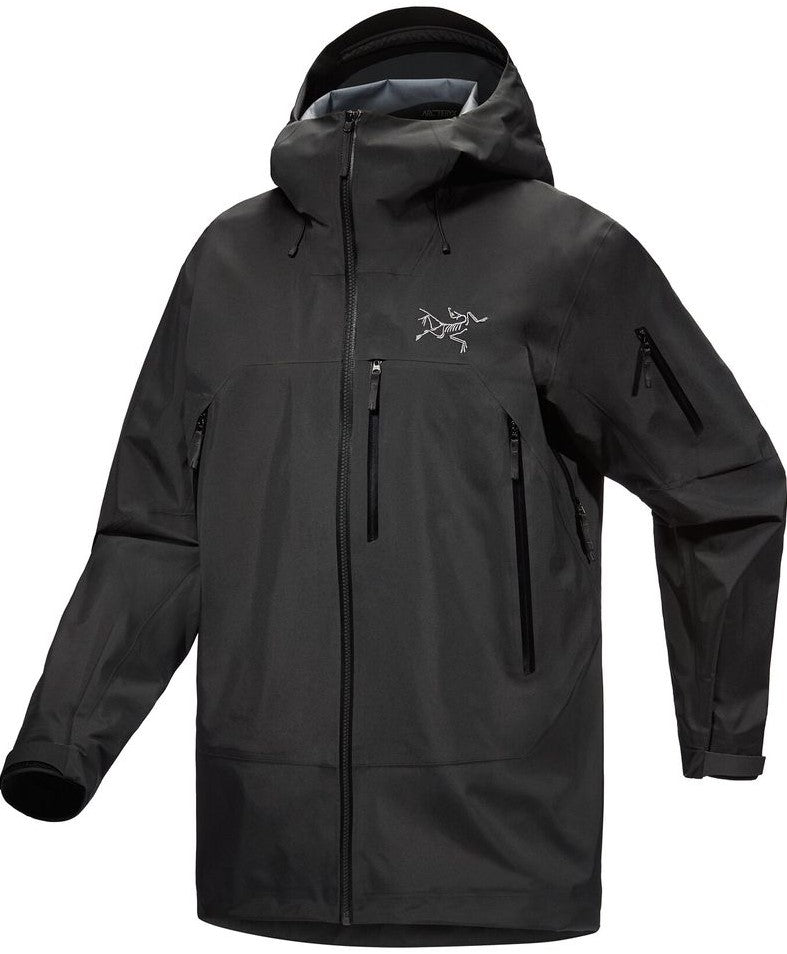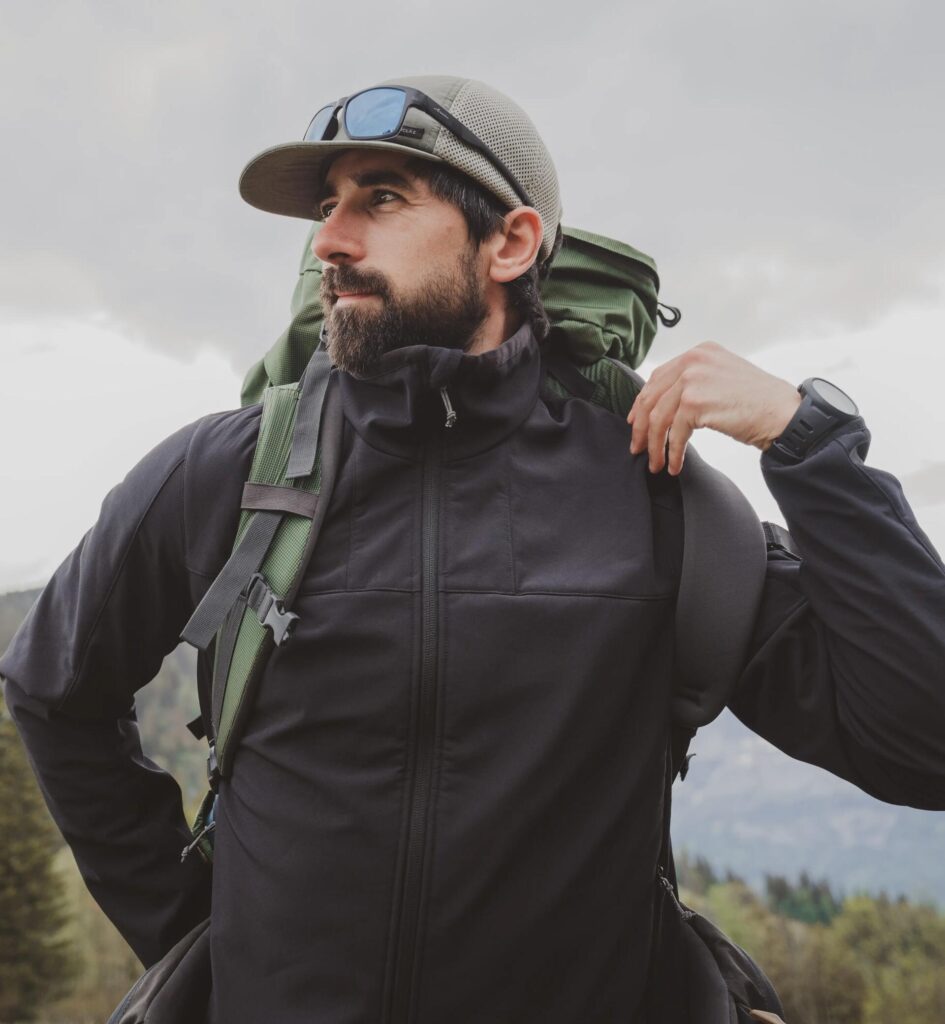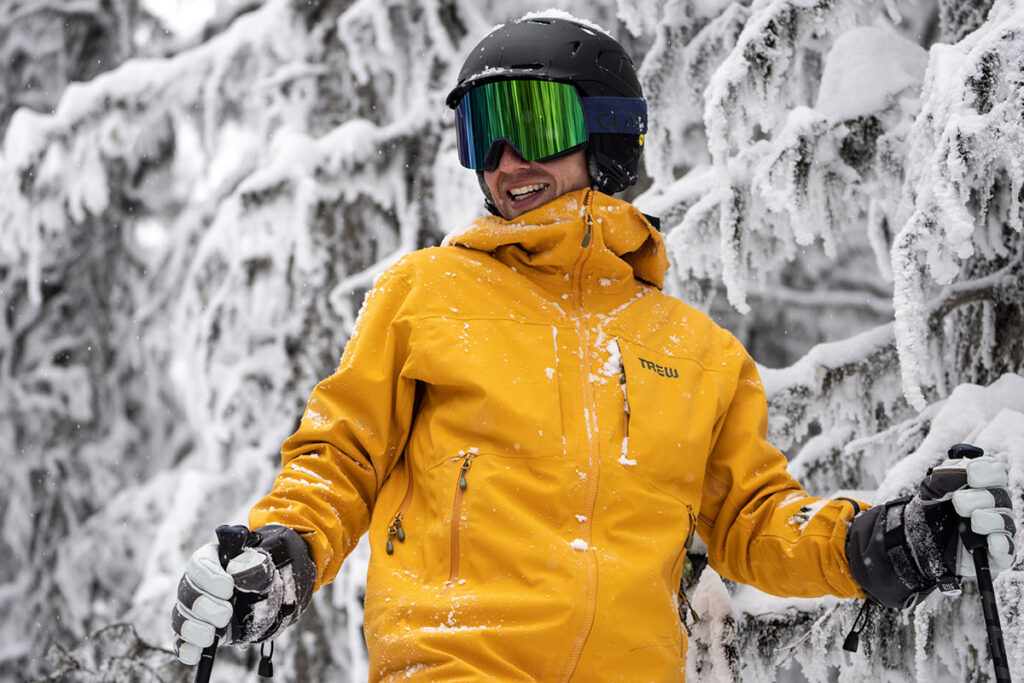Ski slopes and mountain trails present unpredictable and extreme weather conditions, requiring outdoor enthusiasts to have the right gear for protection, comfort, and performance.
Whether you’re carving through deep powder, hiking up steep ridges, or navigating rugged alpine terrain, having a reliable outer layer is crucial.
Softshell jackets are specifically designed to perform in harsh conditions, offering wind resistance, water repellency, breathability, and mobility. But how well do they truly hold up in extreme environments? Let’s break it down.
Wind Resistance: A Critical Shield on Exposed Terrain
One of the biggest challenges on ski slopes and mountain trails is dealing with strong, biting winds.
Wind chill can make temperatures feel significantly lower, leading to heat loss and discomfort. Softshell jackets are constructed with wind-resistant or windproof materials, creating a protective barrier against cold gusts while still allowing for airflow and ventilation.
Unlike fleece jackets, which offer warmth but little wind protection, softshells help skiers, snowboarders, and climbers maintain their body heat without overheating. This makes them ideal for:
- Skiers on high-speed descents, where wind exposure is constant.
- Alpine climbers facing strong summit winds, requiring protection without excessive bulk.
- Hikers on exposed ridgelines, where cold gusts can make conditions unbearable.

Water Resistance: Staying Dry in Snow and Light Rain
Mountain environments are notorious for unpredictable precipitation, from light snowfall to sudden drizzles.
Softshell jackets feature Durable Water Repellent (DWR) coatings, which prevent moisture from soaking into the fabric. Instead, water and snow bead up and roll off, keeping you dry and comfortable.
While softshells are not fully waterproof, they provide adequate protection in most winter sports and hiking conditions. They are particularly useful for:
- Backcountry skiers navigating deep powder, where snow is constantly making contact with clothing.
- Hikers in damp conditions, where light rain or melting snow can be an issue.
- Climbers facing icy mist, needing protection without the stiffness of a hardshell.
For heavier rain or prolonged wet conditions, softshell jackets can be layered under a waterproof hardshell for complete weather protection.

Breathability: Preventing Overheating During Intense Activity
Whether skiing, hiking, or climbing, your body generates heat. Without proper ventilation, sweat can accumulate inside your layers, leading to dampness and discomfort.
Unlike fully waterproof jackets that trap moisture, softshells are designed for breathability, allowing excess heat and sweat to escape while still retaining warmth.
Many softshell jackets also include underarm ventilation zippers or breathable panels, which are useful for:
- Skiers tackling long, technical runs, where body temperature fluctuates.
- Mountaineers exerting themselves on steep ascents, requiring effective heat regulation.
- Backpackers and trekkers, who need consistent airflow while moving through different elevations.

Mobility and Flexibility: Enhancing Movement on the Slopes and Trails
Outdoor sports require full mobility, and bulky or stiff jackets can limit performance. Softshell jackets are made from stretchable, flexible materials that allow for a full range of motion, ensuring unrestricted movement while skiing, climbing, or trekking.
Key mobility features include:
- 4-way stretch fabric, allowing freedom of movement.
- Articulated elbows and pre-shaped sleeves, designed for dynamic activities.
- Athletic fits, providing warmth without excess bulk.
For skiers, this means easier control and maneuverability. For mountaineers, it ensures full flexibility when using ice axes or scrambling over rough terrain.

Lightweight Insulation: Warmth Without the Bulk
One of the key advantages of softshell jackets is their ability to provide warmth without excess weight. Many models feature a fleece-lined interior, which offers insulation while maintaining lightweight breathability.
Softshells work best as:
- Standalone outerwear in cool, dry conditions, perfect for high-output activities.
- Mid-layers under hardshells, offering added warmth in extremely cold weather.
- Layering pieces for multi-day expeditions, allowing adjustments based on temperature changes.
This versatility makes softshell jackets a favorite among skiers, snowboarders, mountaineers, and outdoor adventurers.

Durability: Built to Handle Harsh Environments
Mountain sports involve rough terrain, frequent movement, and constant exposure to the elements.
Softshell jackets are designed with abrasion-resistant materials, making them durable enough to withstand rock surfaces, ski edges, and backpack friction.
Durability-enhancing features include:
- Reinforced shoulders, elbows, and forearms, protecting against wear and tear.
- Ripstop fabrics, preventing small tears from expanding.
- Heavy-duty zippers and seams, ensuring longevity even in extreme use.
For climbers, this means extra protection against sharp rock edges. For skiers, it ensures resistance to snow abrasions and ski gear friction.

What to Look for in a Softshell Jacket for Skiing and Mountain Adventures
When choosing a softshell jacket for harsh ski slopes and mountain trails, look for these key features:
- Wind resistance – Shields against harsh mountain winds.
- Water repellency – Keeps you dry in light snow and rain.
- Breathability – Prevents sweat buildup during high-energy activities.
- Stretch and flexibility – Allows full mobility without restriction.
- Light insulation – Provides warmth without added weight.
- Durability – Withstands tough environments and rugged use.

Conclusion
Softshell jackets are the ultimate outerwear for skiing and mountain adventures, offering the perfect combination of weather protection, breathability, and mobility.
Their windproof, water-resistant, and flexible design makes them ideal for extreme outdoor conditions, ensuring comfort, safety, and top performance.
Unlike bulky insulated jackets or stiff waterproof shells, softshell jackets allow skiers, climbers, and trekkers to move freely, stay warm, and adapt to changing conditions. Whether you’re carving through powder, summiting a peak, or hiking through alpine trails, a high-quality softshell jacket is an essential investment for any outdoor athlete seeking durability, protection, and all-day comfort.

